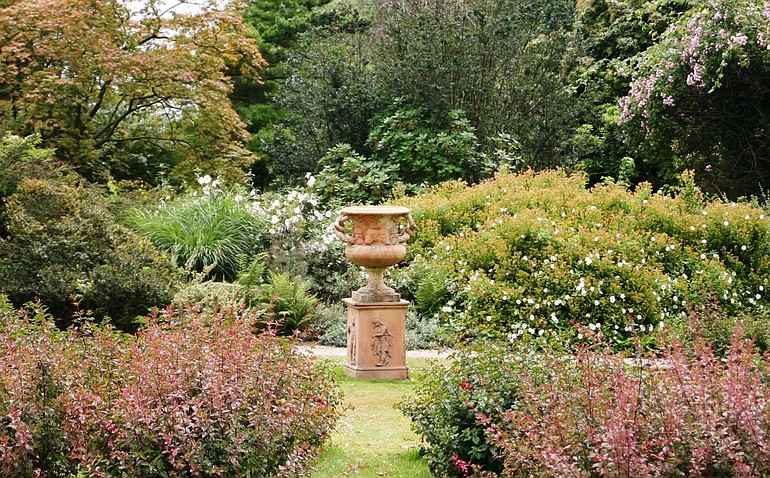The month of May can certainly seem like the busiest time of year in the garden. In April, we complained about the inability to get any work done. It was too cold, there was too much rain and the soil was too wet. There was simply too much weather. Now, despite the weather, not working is no longer an option.
At this time every year, I have to come to terms with reality. If I don’t start now, I will soon have too much to do. It’s time to put the foot to the shovel and go to work. The once dormant lawn needs regular mowing. Weeds that were non-existent two weeks ago are setting seed today. The rhododendron is in full bloom one day and needs to have its sticky, spent flower heads removed the next.
At this time of year, one garden chore leads to another. The early spring bulbs have come to the end of their seasonal show. Let this be a reminder to plant summer blooming bulbs, corms and tubers. Anemone, gloxinia, canna and calla lilies can be planted out in the garden or in large pots. Plant tender dahlias and begonias or bring them out of storage if you packed them away for the winter.
Gladiolas are also ready to go out in the garden. People who love “glads” can’t get enough of them. They come in a huge range of colors and add an elegant dimension to flower arrangements. Others complain to me about their short flowering period. To extend bloom time, plant a portion of your gladiola bulbs every other week. Then, when they do bloom, they will do so in succession. New plants will flower about the time the previous plantings fade.
As a guide to planting depth, most bulbs should be covered with twice their own depth of soil. If the bulb is one inch thick from head to toe, cover it with two inches of soil. If your tubers are dry and shriveled after their long storage period you can plump them up by soaking in water for a day before you plant them. Divide large clusters of dahlias before they go into the ground to increase your number of plants or to share with fellow gardeners.
While you are out working in the garden beds, put wire plant grids and other supports into place so perennials can grow up through them. One of the easiest stakes to use is the flexible “Y” stake. The support portion of the stake is a very sturdy, hollow metal tube with a pointed end that pushes easily into the soil. At the top, two flexible arms wrap around a plant as loosely or as firmly as you choose. They look best if you use the arms to hold up the interior body of the plant, allowing a few of the outside stems and flowers to stand freely outside the confines of the stake.
If you have established rhododendrons, azaleas, or camellias in the garden, fertilize them once their spring blooms are spent. Use an acid-based fertilizer designed specifically for flowering broadleaf evergreen plants. As early blooming trees and shrubs finish flowering, prune to shape. Once the soil has warmed up, you can add a layer of mulch to help maintain soil warmth and hold water in the soil.
Daylilies that have been in the ground for several years may need to be divided. These plants divide easily and each division will flower this year if you get the job done early in the season. Dig the old plants completely out of the ground. Rinse off the dirt so you can see the crown and root ball. Using a sharp knife or shovel, make a clean, straight slice through the crown. Get each division into the ground as quickly as possible and water well.
Fertilize bulbs as the flowers fade and begin to deadhead early blooming perennials. Pinch back fall flowering plants like chrysanthemums, garden phlox and asters so they grow more compact and bushier before blooming. It’s a good thing the days become longer in May or we’d never have time to complete every spring chore. In May, a gardener’s work is never done, which gives me one more reason to be out in the garden.
Robb Rosser is a WSU-certified Master Gardener. Reach him at Write2Robb@aol.com.



